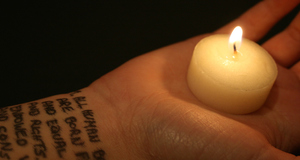Featured Article:Domestic Violence and the Indian Women's Movement: A Short History
By
2017, Vol. 9 No. 11 | pg. 1/1
KEYWORDS:
Domestic violence in India poses an interesting paradox: in addition to being the most ubiquitous of basic human rights violations, it is also the least reported and discussed. The tightly patriarchal norms and structure of traditional Indian culture, and the sharp distinction between public and private life, have made the question of domestic violence a complex and nuanced one, resulting in a long and tireless struggle for justice against the heinous practice. Conceptual reframing and reform surrounding the legal provisions against domestic violence has been the contribution of the sustained crusade against the practice by the Indian women’s movement. This article explores the history of the Indian women’s movement with respect to the issue of domestic violence, and how it triggered the reconceptualization of the issue as well change in the nature of legal provisions protecting women from violence within domestic relationships. The women’s movement in India is traced from the start of the 1970s, when the issue of gender began to gain traction and visibility as an issue separate from other concerns, worthy of being tackled in itself. However, the women’s movement in India is actually a far older phenomenon, having its roots in the Indian nationalist movement, dating back to the early 1920s.The Indian women’s movement, from the 1920s until the 1970s, was heavily influenced and directed by the external economic and political forces of the nation, to the effect that women’s issues were effectively sidelined, never occupying central concern in the minds of people. The period from the 1920s until Independence saw the imbuement of the women’s movement with nationalist politics, its contours shaped by the on-going struggle for freedom from British imperialism. This period, from the 1920s to the 1970s, was characterized by the inception of various local women’s associations, such as the Bharat Stree Mahamandal and the Arya Mahila Samaj. These associations were hardly of political nature; instead of questioning gender roles, they tutored women in child-care, etiquette, sewing, serving tea etc. At the national level, women’s associations such as the National Council for Indian Women and the All-India Women’s Conference were more forthcoming with respect to political issues, their activities ranging across charity, petitioning for voting rights and child marriage reform. These were, however, primarily city-based and elite in composition, with hardly any basis in mass membership. The seeds of women’s participation in politics were sown in the pre-independence period through the active efforts of the Indian National Congress (INC). The INC, recognizing the importance of a mass based movement, mobilized youths, peasants and women’s groups in order to increase its reach and numbers. Women played an active role in demonstrations, their participation in the Partition of Bengal and Swadeshi Movement (1905) playing decisive factors in the movements’ success. As a result of this involvement, women’s role in politics was ‘socially legitimized’, yet remained to a large extent symbolic. Women’s issues per se were set aside, and ‘few women leaders were able to balance their commitments to nationalism and feminism’ (Sen, 2000: 21). Even a champion of human rights like Gandhi made public declarations urging women to stop fighting for voting rights and concentrate their efforts instead on ‘helping their men against the common foe’ (Gandhi, 1920). The first phase of the Indian women’s movement was one of tremendous unity, albeit one achieved at the cost of major social and ideological exclusions (Sen, 2000). Though women’s groups rejoiced the advent of Independence, and the universal suffrage and equal rights that it brought, the disjuncture in the movement became more acute in the second phase, post 1947. Feminist thought became clouded by Hindu tradition and urban concerns, and no attempt was made to unify the movement to represent women from low caste, Muslim and rural backgrounds. Upper and middle class women were the clear beneficiaries of the new nation. Women’s organizations became institutionalized and clearly welfarist. Once again, the women’s movement aligned with the national outlook, and economic progress was given priority over all other concerns. The period after Independence also saw the growth of leftist women’s groups, such as the National Federation of Indian Women. These groups were unfazed by constitutional guarantees, and its peasant and working class women members continued the fight for industrial workers’ wages and other leftist demands. Though the participation of women in leftist movements such as the Tebhaga (1946-47) and the Telengana (1946-51) movements was significant, these movements were not committed to the issue of gender. Women’s issues fell within the purview of the urban elite, while poor rural women were mobilized only for nationalist or class causes. These disjunctures based on class lines that developed post-1947 undermined the possibility of a unified women’s movement, which turned out to be the movement’s greatest weakness. It was not until the 1970s that women’s true concerns began to take center stage. There was a broad reckoning within the feminist movement that equal fundamental rights and universal franchise had been hollow and inadequate in granting women political representation. This period was marked by the occurrence of several national and international events that changed the course of the movement in India, giving rise thus to the New Women’s Movement. The year 1971 was the start of the international year, and later the decade, of women. At the urging of the United Nations, the Indian government appointed a Committee on the Status of Women to assess the constitutional, legal and administrative provisions that had a bearing on the status of women in India. According to the 1974 report ‘Towards Equality’ prepared by the Ministry of Education and Social Welfare, since 1911 the condition of Indian women (especially poor women) had worsened in a variety of conventional measures of wellbeing. Gender disparities had widened in employment, health, education, and political participation (Sen, 2000). The report attributed women’s disabilities to the traditional socio-cultural institutions in India, which hindered them from accessing their Constitutional rights, and put forth several recommendations including inheritance and marriage reforms. Of significance was the report’s vehement rejection of the Dowry Prohibition Act of 1961. Loopholes in formulation of the legislation, and the lack of registered cases despite the increasing prevalence of dowry related crimes were regarded as the primary reasons for the Act’s failure. The New Women’s movement, starting out in the 1970s, was one of ‘self-conscious commitment to feminist politics’ (Sen, 2000: 26). The movement had developed strong socialist ties, and there was general disenchantment towards what the government had done for women in the country. The issue of violence against women occupied national focus, as cases of custodial rape and dowry related violence were publicized by the media, leading to legal trials that attracted wide scale attention. The Mathura rape case (1972) resulted in nation wide protests for reform in rape laws and for the state to take responsibility for crimes committed by its agents. The death of married women through kitchen fires had also started to become a common occurrence during this period. These deaths, dubbed as ‘dowry deaths’ and ‘bride burnings’, were quickly associated with violence inflicted on brides for the non-transfer of money, assets and wealth from their natal to their conjugal families. Such incidents, in addition to the politicization of the same by women’s activists and protestors, opened up the myriad forms in which women were facing violence, an issue so central to the women’s question but never addressed by the women’s movement before. The issue of violence provided a ‘common ground for mobilization’ in the New Women’s Movement. What followed in the 1980s was the ‘golden age’ of the feminist politics in India, replete with a host of women-centric legislations. The thrust of the women’s movement in the 1980s was on legislative reform. Cases of rape, violence and dowry related crimes, in addition to controversies over the Shah Bano case and the Uniform Civil Code, highlighted the need for laws that specially addressed women’s issues.1 Though the term ‘domestic violence’ did not exist in legal parlance till 2005, a step in its direction was made in 1983 with the adoption of sections 498A and 304B of the Indian Penal Code. The enactment of 498A made cruelty towards wives a non-bailable criminal offence punishable with up to five years in prison. 304B made dowry deaths an offence with a minimum of seven years extendable to life imprisonment if the perpetrator was found guilty. Indira Jaising describes Section 498A as ‘bold’ (Jaising, 2014). For one, it introduced criminal offences in intimate relationships, which thus far were considered beyond the reach of the law, and two, because cruelty was not confined to the demand for dowry alone nor confined to physical mutilation or injury but extended also to mental cruelty. (Jaising, 2014) Additionally, the offence was made cognisable, which meant that an arrest could be made without a warrant from a magistrate. Four types of ‘cruelty’ were recognized by the article: conduct that is likely to drive a woman to suicide; conduct which is likely to cause grave injury to the life, limb or health of the woman; harassment with the purpose of forcing the woman or her relatives to give some property; harassment because the woman or her relatives is unable to yield to demands for more money or does not give some property. Section 498A, though a landmark in the women’s movement, faced criticism on a number of accounts with respect to the extent it curbed the issue of violence against women. The term ‘cruelty’ was felt to be restrictive, leaving out of its ambit economic and sexual violence. The law also left out cases of violence occurring within the natal home of a woman. Additionally, the Family Courts Act of 1984 shifted ‘cruelty’ cases from the jurisdiction of magistrate courts to under that of family courts such that women could settle divorce and maintenance proceeding under one roof. The predominant concept governing family courts was the ‘protection of the family structure’ and not punishment. Hence, a certain degree of violence was validated in such cases to keep the family from falling apart. The major shortfall of 498A was however the viability of its implementation. The framers discounted the difficulty women faced in approaching the police for filing the first information report (FIR), as the authorities were reluctant to do so given their own moral prejudices and belief in the normalcy of domestic violence. Though the number of reported cases under these penal provisions did increase with each successive year, the same did not apply for the rate of convictions. A study conducted by the Centre for Social Research, Delhi (CSR 2005), revealed rather disturbing findings. Out of 100 cases which were ordered for investigation under Section 498A, only in two cases did the accused get convicted. The only cases which ended in conviction were those where the woman had died and the case under Section 498A was registered along with Section 304B (dowry death) or Section 302 (murder). There were no convictions in any of the cases registered under Section 498A alone. Without tangible benefits ensuing out of the legislation, it was impossible to have faith in its efficacy. Consensus during the 1980 centered on domestic violence being inextricably linked with the murder of brides, the demand for dowry being the underlying basis for inflicting physical violence. This understanding of the term was similarly voiced in Section 498A, leaving out of its purview the myriad forms in which women faced violence in their marital as well as natal homes, before the first seven years of marriage as well as after. The need for a more comprehensive law on domestic violence was voiced across women’s groups in India that addressed not just physical violence, but also verbal, economic, emotional and sexual violence. The demand was to expand the idea of violence to acknowledge non-physical forms of violence and expand its site from the marital home. The campaign for a new law on domestic violence spanned over a decade, and was spearheaded by the Lawyer’s Collective 2 that drafted the legislation and negotiated with the government for its enactment. The bill put forth by the Lawyer’s Collective prioritized the protection of women above the punishment of the perpetrator. Taking the political and social context into perspective, the proposed law was placed within the civil ambit, as it was commonly believed that placing it in the criminal ambit would reduce women’s access to the law. The bill was considered a milestone with respect to the way it approached a women’s position in society; unlike majority of laws under the Indian Constitution that view women as part of a family, the proposed bill approached women respondents in capacity of them being citizens. The first draft of the civil law on domestic violence was placed before the National Commission for Women in 1994. A national colloquium, ‘Empowerment through Law’ was a milestone in the journey of the domestic violence law. Attended by academics, activists and lawyers, there was wide acknowledgment that domestic violence was vastly different from other forms of violence as it occurred within the framework of intimate relationships often in the privacy of the home and in a situation of dependency, making reporting and access to legal aids and other support services difficult. (Jadavpur University, 2010) The fact that domestic violence was not even recognized by law was reason enough for a new legislation. A number of concerns were raised by women’s groups during the drafting process of the new act. A contentious debate arose whether the new law should be gender neutral, or was it to also include men who were victims of domestic violence. The consensus emerged that gender neutrality would defeat the very purpose of a law on domestic violence. The violence faced by women was a gendered phenomenon, which resulted and reinforced gender inequalities. It was thus essential that the law be designed specifically for women. Another concern voiced by women’s groups was whether the law was to cover women perpetrators of violence as well. There were a number of cases of mothers-in-law and sisters-in-law inflicting violence in marital homes. However, it was concluded that the law was primarily meant for the protection of women, and such a law should not in any circumstance become a means of misuse against those for who it was instituted in the first place. On 8 March 2002, eight years after the draft of the domestic violence bill was submitted by the Lawyer’s Collective, the National Democratic Alliance (NDA) ruling government introduced a separate bill in the Lok Sabha called the ‘Protection for Domestic Violence Bill, 2001’. The new bill, instead of protecting women against domestic violence, was directed towards the preservation of the family structure. The bill was a set back on a number of fronts; the rights of the aggrieved person went unaddressed and the time frame for completing the legal procedures was made no mention of. The provisions were examined by the Parliamentary Standing Committee, to which the bill was referred, and the views of the National Commission for Women were also sought. Two years passed and nothing substantial happened. In the meantime, the Lok Sabha dissolved in 2004, bringing in the United Progressive Alliance (UPA) as the ruling government at the center. The UPA government mentioned in its Common Minimum Program the enactment of a civil law on domestic violence as one of its primary agendas. The draft bill received cabinet approval in June 2005. After being passed by both Houses, and receiving Presidential assent, the bill entered the Statute book as the Protection of Women from Domestic Violence Act, 2005. It came into effect on 26 October 2006. Rajeswari Sunder Rajan has described the PWDVA as ‘radical’. Bringing the politics of rights into the house, the provisions of the Act are undoubtedly so in terms of its broadened scope and the extent to which it challenges heteronoramtive patriarchal definitions of family and a woman’s ‘natural’ position within it. The Act extends the scope of domestic violence beyond that faced in conjugal relationships to violence in all forms of domestic relations, including violence in a woman’s natal home and in relations in the ‘nature of marriage’. Apart from child abuse, the Act also takes into account the incidence of violence on elderly women. The Act widens the scope of remedial measures, allowing women the right to reside in shared households regardless of whose name the house is under. The Act polarizes men and perpetrators and women as victims, and provides for a time bound framework for the resolution of cases. The PWDVA is a watershed in India’s legislative history. It recognizes the role of non-governmental actors as important agents in the dispensing of justice in addition to legal, medical and financial aid. Recognizing NGO’s as ‘service providers’, the law is a site for blurring the divide between societal institutions. Being a multi-agency response towards the issue of domestic violence, the Act institutes for the appointment of Protection Officers as intermediaries between the victim and the authorities, taking into account the victim’s physical, emotional and psychological frame of mind and the need for assistance. The PWDVA is a landmark in the Indian women’s movement against gender injustice brought about by domestic violence. The Act is designed taking into account the delicate nature and difficulty involved in dealing with cases of marital violence. As ubiquitous as its occurrence is, so is the extent of its social acceptance and legitimacy. Recognizing the fact that legal procedures would disincentivize women from reporting cases of domestic violence, due to social backlash as well as fear of collapse of the family structure, the Act creates a framework for the informal resolution of conflicts through service providers. Community based interventions, such as NGOs, are viewed as an effective means of solving disputes, as people find it less intimidating sharing their concerns among familiar faces. Thus, the PWDVA is a balanced mix of formal law and social reality (Sen, Dhawan, 2015). The recognition of NGOs as service providers, as agents whose services and co-operation the government finds necessary, is very significant. The relationship between NGOs and the state in India has not always been a favourable one, several factors contributing to the gradual easing of tensions in recent times. Post-independence, India adopted a strictly centralized and statist approach to governance, allowing little to no space for businesses or civil society to participate in national development. The National emergency in 1975 was a turning point for NGO-state relations, undermining their role to an even larger extent. It dealt a severe blow to non-governmental agencies, which were deliberately kept out of the political space as they were viewed as threats to state power. The seventh 5 Year Plan explicitly declared that only ‘politically neutral’ NGOs would receive government aid. This made it quite impossible for NGOs to survive; dependence on state funds, and the bureaucratic red-tapism involved in availing it, drastically reduced persons from entering the sector. The situation changed dramatically post Liberalization in 1991. Global consensus was in favor of a minimum state, free markets and transfer of foreign aid to developing countries. The thrust shifted from the public to the private sector, and economic growth in India was ready to take off. International bodies such as the World Bank, Asian Development Bank and IMF began to pump funds into India for development purposes. Under these circumstances donor agencies supporting social causes preferred to aid NGOs instead of the state. The state had largely failed in ‘delivering development’, being rendered incapable of penetrating target populations and effectively and accountably utilizing funds. With deregulation coming into effect in India, it became possible for NGOs to receive large sums of aid from international donor organizations for development work. In effect, the number of NGOs grew rapidly, reaching the 500,000 mark in 2000. In 2004-5 alone a total of Rs. 6,257 crore was received by 18,540 registered NGOs from foreign sources (Sen, Dhawan: 2015). The increase in funds and agencies was accompanied with professionalization of the sector; skilled professionals, demarcation and differentiation of roles, process flows and other structural aspects typically associated with the private sector gradually made way into NGOs as well. Some, however, believe that dependence on international donor agencies has compromised NGOs’ adherence to the causes they support. NGOs receiving foreign aid have been dubbed as ‘business enterprises’ by critics, which have to concede to donor demands rather than their own values (Roy, 2011: 589). In this grand scheme of socio-economic and political turnarounds, the women’s movement was not ignored. One observes the ‘NGOization of the women’s movement’ post 1990. The general dissatisfaction with what the state had done for women, coupled with the growth in favorable conditions for non-governmental agencies within the country, served as a boost for NGOs to take the lead in addressing gender concerns. In 2003-4, the number of NGOs dedicated to women’s issues were as high as 1,533 (Sen, Dhawan: 2015). Organizations dedicated to domestic violence per se existed even before 1990; however, they lacked consistency, legal expertise, funds, and full-time professional backing in dealing with the complexity of an issue like domestic violence. With the onset of Liberalization in the mid 1990s, NGOs became far more equipped in their dealings. They could afford to employ persons with legal, medical and psychological expertise, and structured processes were introduced with respect to how victims would be dealt with and how mediation between the family and the aggrieved would be handled. The role of NGOs in addressing domestic violence had become too great to be ignored by the government in 2005 when the DV Act was to be passed. Without recognizing and involving them, the legislation was realistically unviable given the reach and success rate that NGOs commanded in the domain. The PWDVA was therefore a culmination of a long and turbulent relationship between the state and non-governmental organizations. From women’s groups occupying space outside the state in the 1980s, to the professionalization of services in the NGO sector in the 1990s, the PWDVA of 2005 made way for a meshing of both. ReferencesSen, S. Dhawan, N. (2015): “Addressing Domestic Violence: Changing Strategies within the Women’s Movement,” India: Democracy and Violence. Oxford University Press Sen, S. (2000): “Toward a Feminist Politics? The Indian Women’s Movement in Historical Perspective,” Policy Research Report on Gender and Development (9). The World Bank Agnes, F. D’Mello, A. (2015): “Protection of Women from Domestic Violence,” Economic and Political Weekly Vol L, No 44, 31 October Jaising, I. (2014): “Concern for the Dead, Condemnation for the Living,” Economic and Political Weekly Vol XLIX, No 30, 26 July Centre for Social Research (2005): “A Research Study on the Use and Misuse of Section 498A of the Indian Penal Code,” Delhi: Informal Publication. School of Women’s Studies, Jadavpur University. Women’s Studies Research Centre, Calcutta University (2009-2010): “Report on Database on PWDVA 2005 in 12 Districts,” West Bengal Commission for Women Gandhi, M.K. (1920): “Women and the Vote,” Young India, 24 November 1920 Roy, Srila (2011): "Politics, passion and professionalization in contemporary Indian feminism". Sociology 45.4: 589 Kumar, Virendra (1975): “Committees and Commissions in India: 1947-1973” Endnotes1.) Uniform civil code (UCC)is a constitutional mandate to replace personal laws,based on the scriptures and customs of each of the majorreligious communities in India,with common laws governing every citizen. The debate centering the enactment of the UCC gained significance during theShah Bano casein 1985. By means of permitting Muslim Personal Law (based on theSharia) in the land, the legal system in effect made unilateral divorce andpolygamy legitimate practices for Muslims in India. The Shah Bano case politicized the issue; the debate was contended on grounds of identity, the protection of minority rights being weighed against the severe human rights violations. 2.) Lawyers Collective is an NGO formed in 1981 which works towards human rights advocacy, especially issues relating to women’s rights, HIV, tobacco, LGBT and parliamentary corruption in India. Suggested Reading from Inquiries Journal
Inquiries Journal provides undergraduate and graduate students around the world a platform for the wide dissemination of academic work over a range of core disciplines. Representing the work of students from hundreds of institutions around the globe, Inquiries Journal's large database of academic articles is completely free. Learn more | Blog | Submit Latest in Women's & Gender Studies |
















